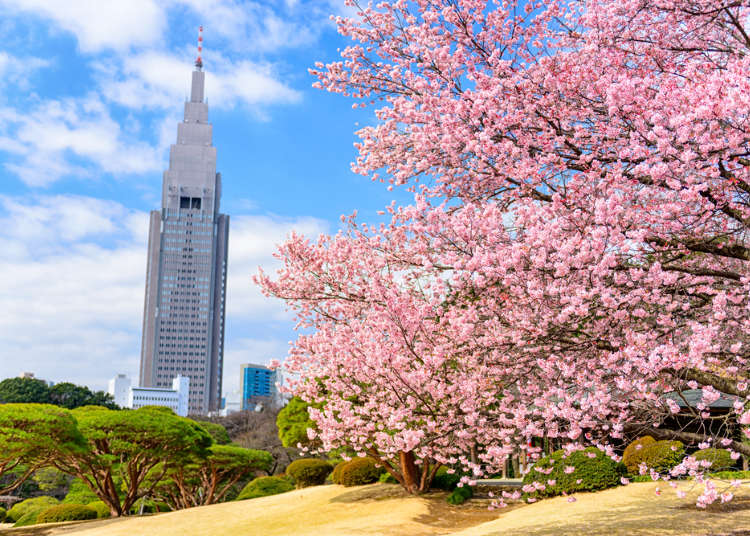
Shinjuku Gyoen National Garden (新宿御苑) is a natural oasis in the heart of Shinjuku! Immerse yourself in the breathtaking beauty of cherry blossoms in the spring, the stunning autumn foliage, and a variety of flora all year round. You'll feel like you've stepped into a whole new world!
Let's explore how to get to this amazing garden and what makes it so special.
- Advanced reservations are required to enter Shinjuku Gyoen on: March 23-24, March 30-31, and April 6-7.
- No advance tickets are available for weekdays during the cherry blossom season.
- Admission ticket vending machines can be busy during cherry blossom season.
- Suica or Pasmo holders can smoothly enter the park directly by tapping their pass at dedicated gates.
What is Shinjuku Gyoen?
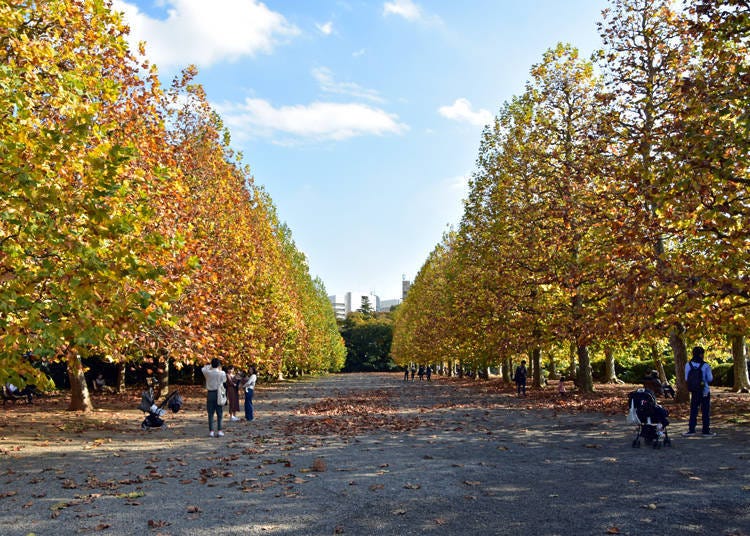
Shinjuku Gyoen has a long history, beginning with it being the residence of Lord Naito, a vassal of Tokugawa Ieyasu. Later, the grounds were used for agricultural experimentation and finally, Shinjuku Gyoen National Garden was completed in 1906 as an Imperial Garden.
In 1949, it was designated as a national garden and opened to the public. With the centennial anniversary of its opening in 2006, it has remained popular as an urban oasis.
What to see in Shinjuku Gyoen
Shinjuku Gyoen is 58.3 hectares in area and 3.5 square kilometers in circumference, so it may be difficult to choose where to go first.
Here are some of the selected spots that you should definitely visit at Shinjuku Gyoen.
A Japanese traditional garden where you can enjoy the uniqueness of Japan
When you come to Shinjuku Gyoen, stop by the Japanese traditional garden. This is a spacious area that is very Japanese in style. Japanese and many foreign tourists visit here, taking lots of photos and enjoying the garden.
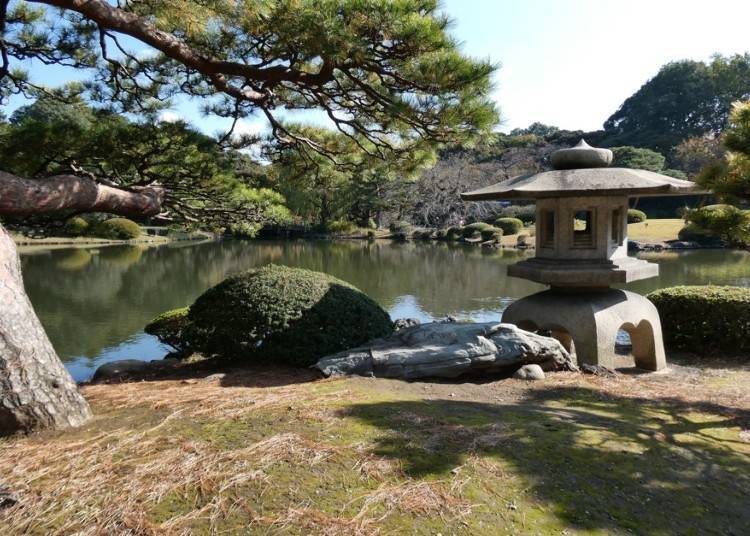
This Japanese traditional garden perfectly conveys the image and culture of Japan. It was designed to go along with the flow of the pond.
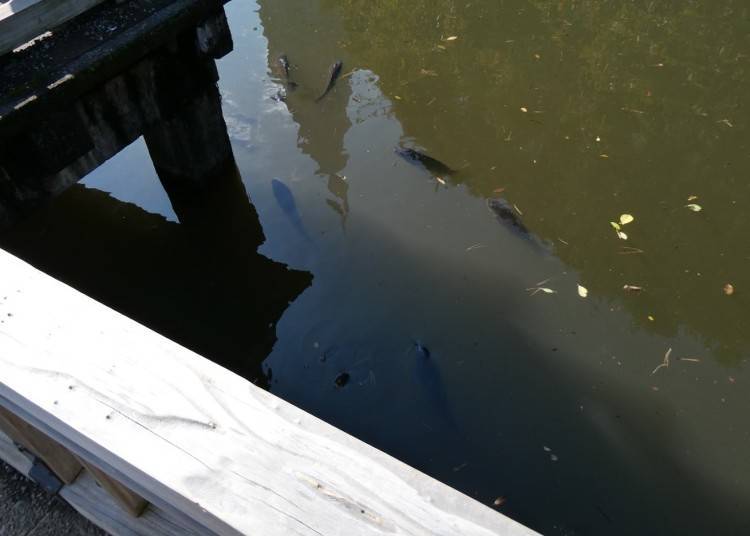
There are many carp swimming in the pond of the Japanese traditional garden.
The Kyu-Goryo-Tei (Taiwan Pavilion)
The Kyu-Goryo-Tei (Taiwan Pavilion) is one of only a few authentic Chinese-style structures in Japan. The roof style, color, and interior faithfully convey the Chinese style.
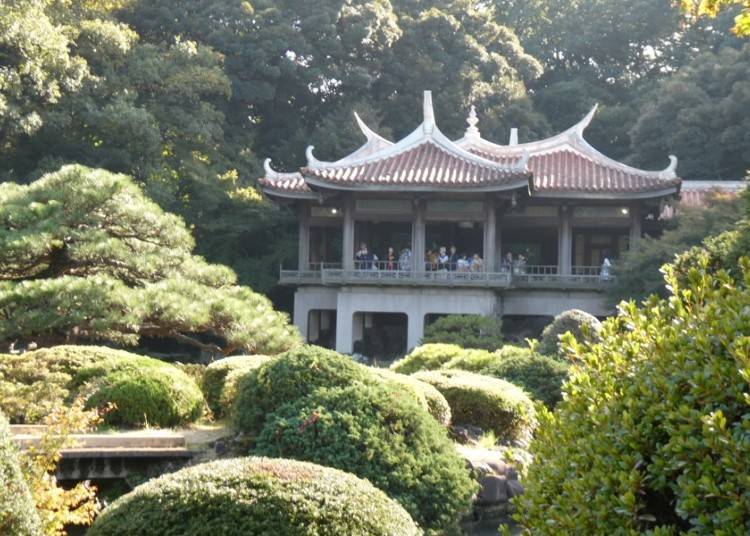
In the Kyu-Goryo-Tei (Taiwan Pavilion), there is a unique tranquility different from other places in the Japanese traditional garden.
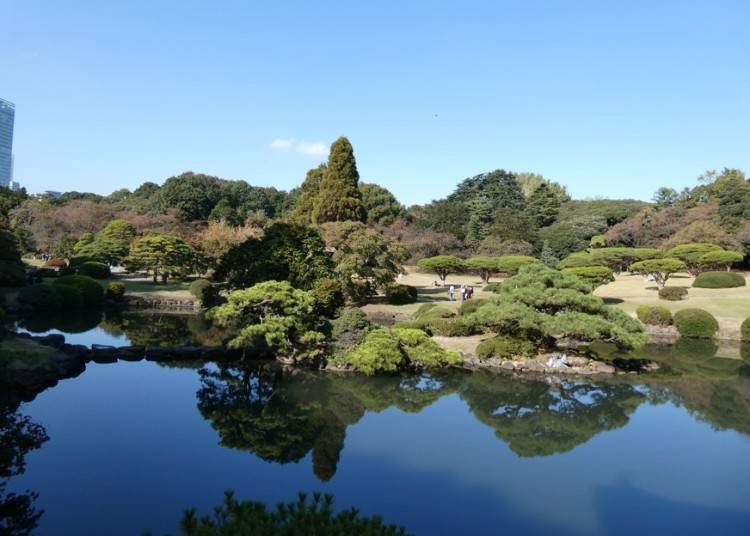
You can view the pond from inside the Kyu-Goryo-Tei (Taiwan Pavilion). The reflection of the trees and sky on the pond is so pretty that one never tires of looking at them.
Formal Garden
The formal garden is beautifully symmetrical. In the center, the flower beds contain about 500 roses of approx. 100 different varieties, and on the left and right, extending for about 200 meters, is a row of around 140 London planes. In this garden, you can enjoy European-style scenery.
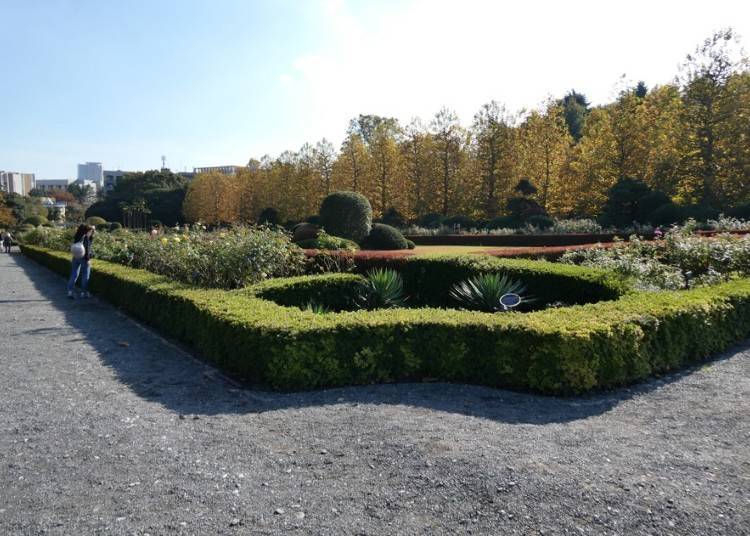
It takes about 5 to 10 minutes to walk from the Japanese traditional garden to the formal garden. The transition from the Japanese traditional garden to the formal garden is made effortlessly and is one of the masterpieces of Shinjuku Gyoen.
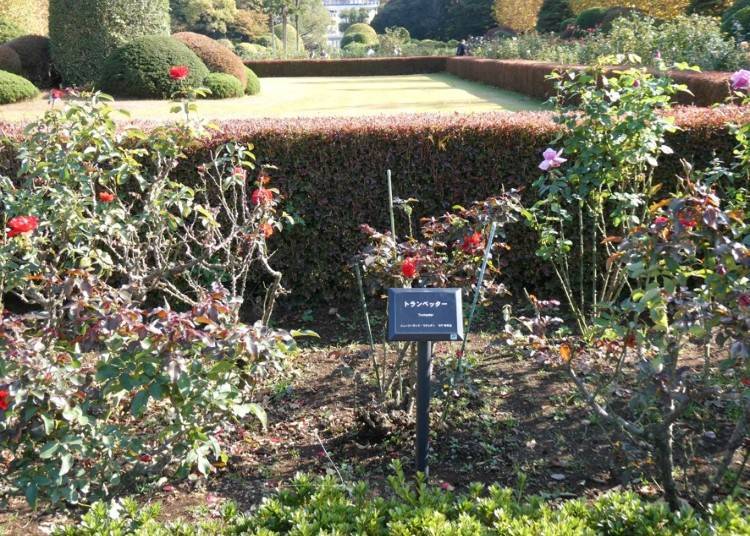
Rose flowerbeds. We could see autumn roses when we made this report in the middle of November. The best time for viewing autumn roses is typically from mid-October to mid-November.
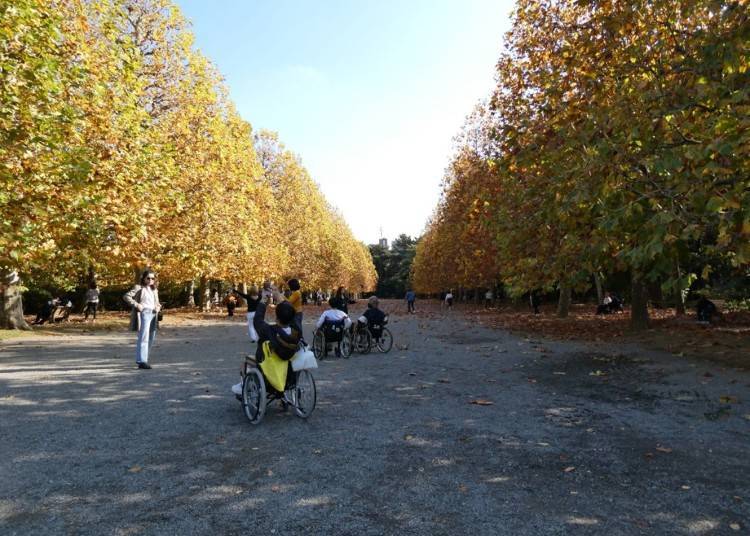
Among the many spots in Shinjuku Gyoen, the avenue of London planes is magnificent, evoking a romantic feeling like one in a movie scene. People of all ages come to enjoy and photograph the autumn leaves.
Landscape garden with impressive wide lawn with buildings in the background
The landscape garden is characterized by open grass and giant trees. Between the towering tulip trees, the symbolic tree of Shinjuku Gyoen, and skyscrapers can be seen.


On the lawn you can see people lying on the grass and families enjoying picnics. Isn’t it a really pleasant place on a sunny day?
Greenhouse where various kinds of plants can be seen
There is a greenhouse that was remodeled in 2012 near the Okido Gate.
You can see tropical plants from all over the world, Japanese plants from the Ogasawara Islands and Okinawa, and you can also see western orchids since Shinjuku Gyoen is the birthplace of full-fledged orchid cultivation in Japan.
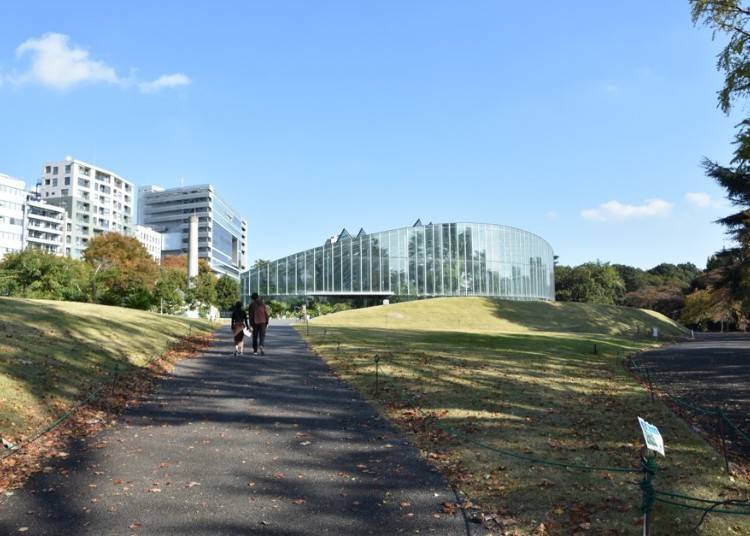
The greenhouse is warm even in winter, so if you come to Shinjuku Gyoen in winter, this is a good place to get warm.
Kyu-Gokyu-Sho (Old Imperial Rest House) is designated as an Important National Cultural Property
The Kyu-Gokyu-Sho (Old Imperial Rest House), a facility designated as an important cultural property, is near the greenhouse. Originally it was built as a place for the Imperial Family to rest when they came to view the plants in the greenhouse.
Later, after it was used as a rest house for the Imperial Family, it was turned into a clubhouse for golf and tennis, and until 1994 it functioned as a management office. It underwent renovation in 2000, which was completed in 2001. It has been designated as an Important Cultural Property as a historic and culturally valuable building.
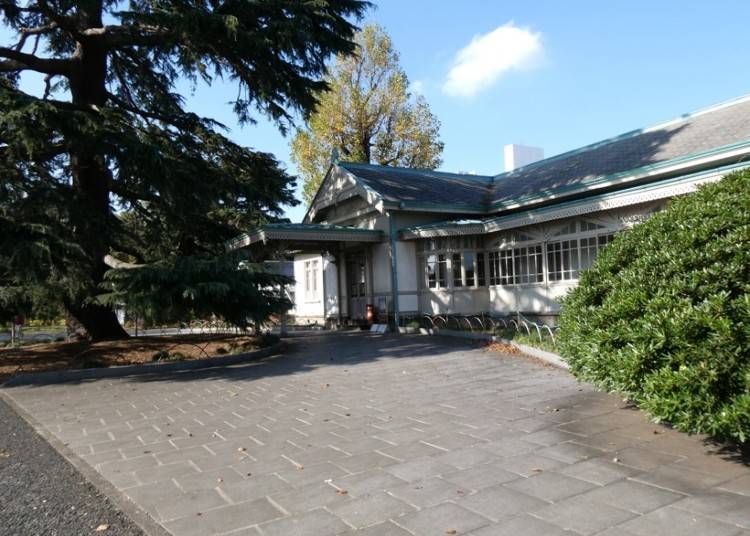
Please check the official website of Shinjuku Gyoen National Garden or on-site notices for the opening hours. Please be aware that photography is prohibited inside. (From August 1, 2023, the Kyu-Gokyu-Sho (Old Imperial Rest House) is closed. For information about its reopening schedule, please refer to the official website of Shinjuku Gyoen National Garden.)
Restaurants and Cafés in Shinjuku Gyoen
In Shinjuku Gyoen, there are various spots and restaurants where you can take a break. If you get tired from exploring the spacious grounds, why not stop by and give them a try?
Indulge in a satisfying lunch at Restaurant Yurinoki (Tsuburano)

Restaurant Tsuburano is the closest to the Shinjuku Gate, about a 3-minute walk away. It is located within the landscape garden. They offer Japanese cuisine and sweets that incorporate matcha (powdered green tea).
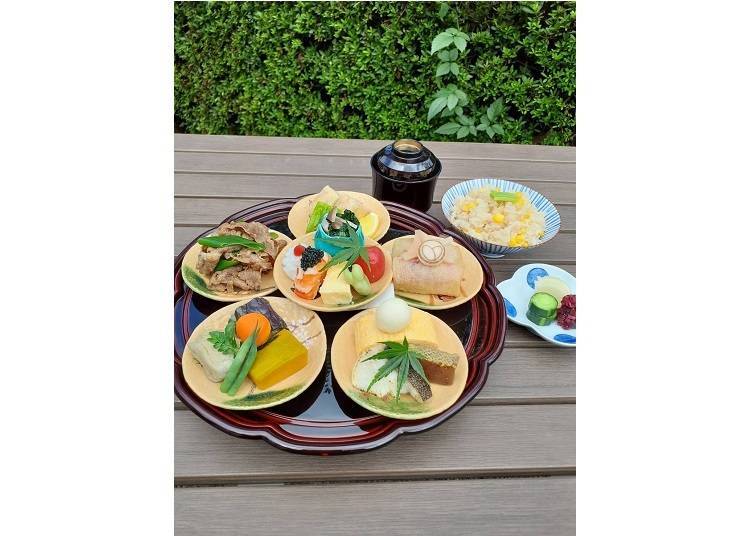
Our recommended dish is the Oedo Eezara Bento (Limited Quantity), which features Kyoto cuisine served on small plates depicting famous Tokyo landmarks. It is available in two options: 5 plates for 3,000 yen or 6 plates for 3,800 yen (both prices include tax, reservation required). Additionally, the restaurant offers the Beef Sukiyaki Rice (1,580 yen including tax) and the popular Ohagi Cannelé (Ohagi being a traditional Japanese sweet made of glutinous rice and red bean paste; these are shaped like canelé pastries) (2 pieces for 500 yen or a set of 16 pieces in a box for 2,100 yen; both prices including tax).
Snack Time at Central Rest House (SASAYAIORI+ Shinjuku Gyoen)
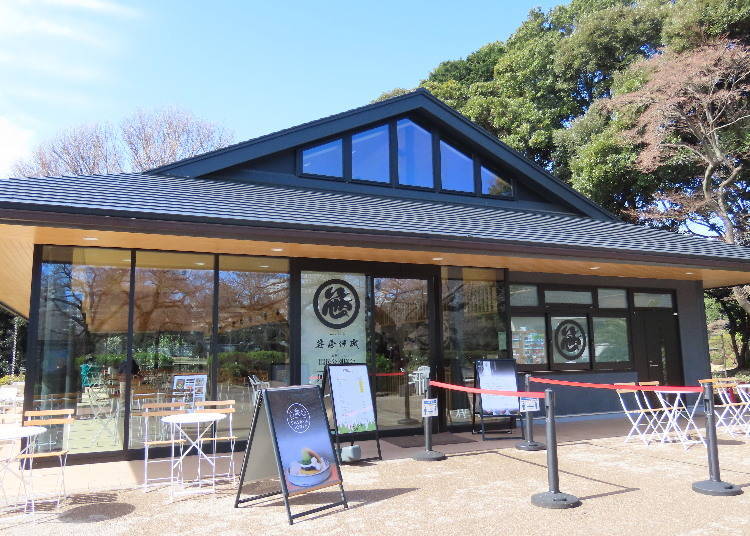
Located within a 10-minute walk from each entrance gate, SASAYAIORI+Shinjuku Gyoen is a café operated by Sasaya Iori, a renowned traditional Kyoto confectionery shop. They offer a variety of carefully crafted Japanese confectioneries and sweets.
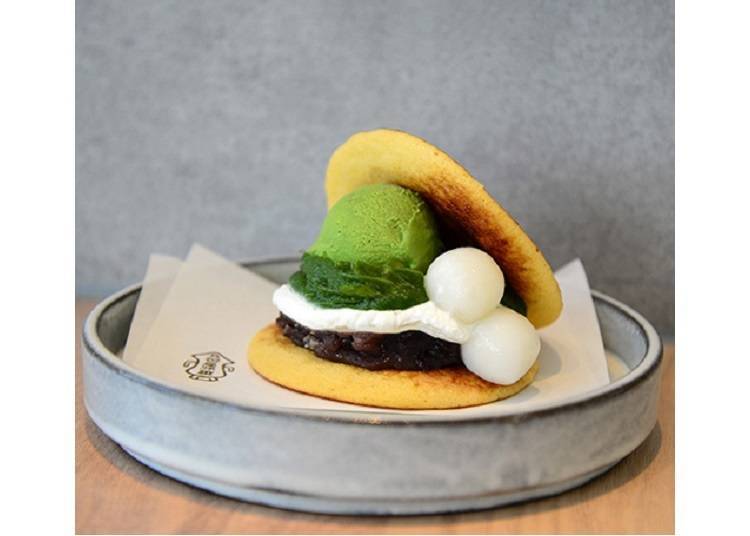
One of their specialties is the Fukurai Dorayaki Uji Matcha Special (950 yen including tax), which features a fluffy dorayaki pancake filled with chunky sweet bean paste and Uji matcha ice cream. You can find an array of exquisite Japanese sweets and desserts at this café.
They also offer visually appealing Japanese sweets, such as the Soft Serve Karafuru, decorated with tiny colorful rice balls (Vanilla: 600 yen, Uji Matcha: 700 yen; both prices including tax). These cute desserts are not only pleasing to the eye but also delicious.
Dine with Unconventional Ingredients at the Information Center Cafe, “National Parks Cafe Under the Tree”
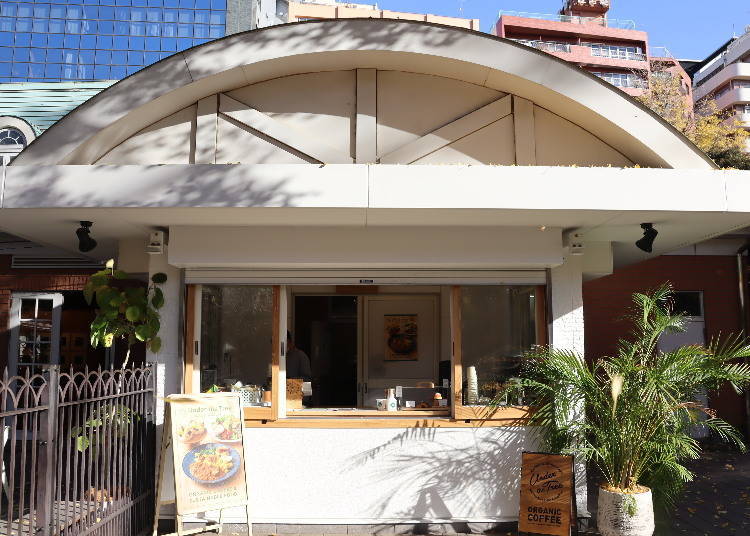
National Parks Cafe Under the Tree, located within the Information Center adjacent to the Shinjuku Gate, is an upcycling café that actively incorporates unconventional ingredients into its menu to reduce food waste.
Their Spice Curry (1,200 yen including tax) features a blend of 12 spices and herbs combined with spice-infused oil. The dish includes side dishes of deep-fried vegetables and pickles made with unconventional vegetables.
Additionally, they offer drink options such as organic coffee (500 yen including tax) made with organic beans. So, when you want to take a break, be sure to try out their drink menu as well.
A Popular Anime Pilgrimage Destination
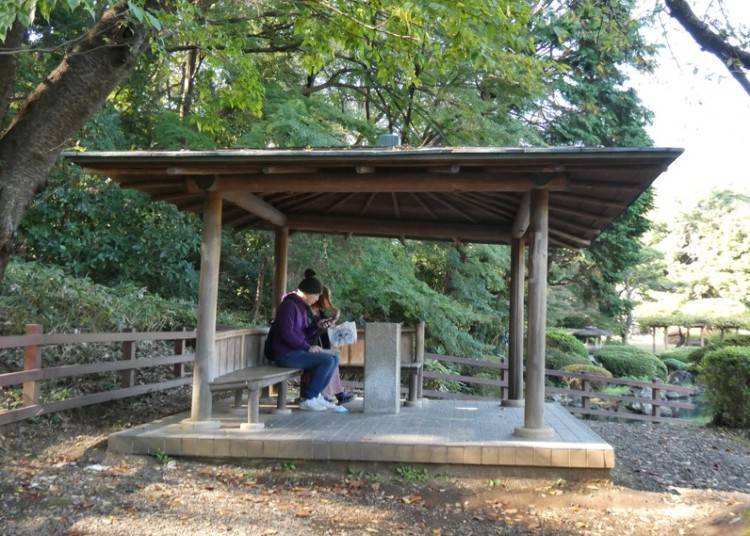
Shinjuku Gyoen is said to have served as the setting for an animated film, making it a popular pilgrimage site among fans.
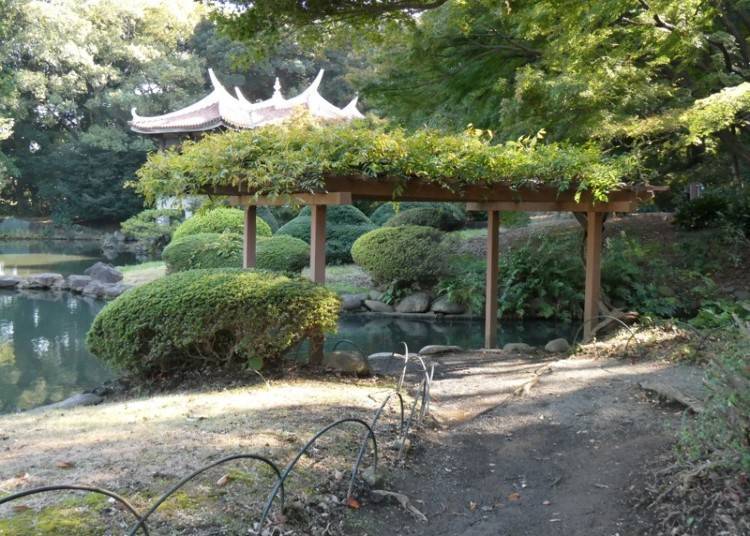
The gazebo and wisteria arbor near the Kyu-Goryo-Tei (Taiwan Pavilion) are particularly popular and widely recognized as “sacred places” among fans. It’s definitely worth a visit.
Shinjuku Gyoen is full of attractions. Apart from these, there are many other spots in the garden, ensuring that you won't get bored even if you spend an entire day there.
If you're tired of the hustle and bustle of the city during your trip to Tokyo or if you simply want to unwind from the stresses of daily life, we highly recommend visiting this beautiful area. It will leave you with a refreshed and rejuvenated feeling.
How to get to Shinjuku Gyoen
Shinjuku Gyoen has three entrances that differ depending on where you enter: Shinjuku Gate, Okido Gate, and the Sendagaya Gate.
Of these, the Shinjuku Gate is a convenient entrance. It is located about a 10 to 15-minute walk from JR Shinjuku Station.
- Go out of the JR Shinjuku Station Southeast Exit.
- Using the escalator or elevator at the southeast exit of JR Shinjuku Station, go down to the plaza in front of the station.
- Cross over the street and go straight along the side of the girder bridge.
- Continue on to Koshu Kaido and then cross at the Shinjuku 4-chome intersection.
- Continue straight along the road, cross at the pedestrian crossing beyond the Sekaido, and then go over the pedestrian crossing on the right.
- After crossing the street, turn left and go straight.
- The Shinjuku Gate will be on your right, and the Information Center on your left. See directions here.
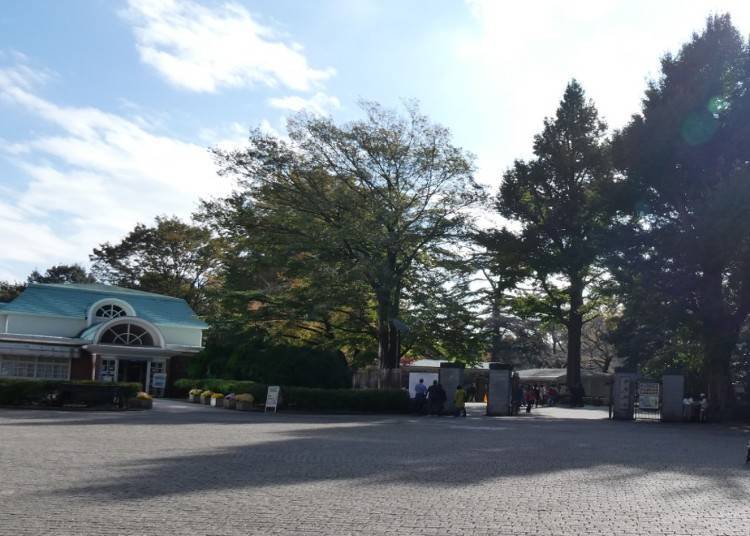
Beside Shinjuku Station, other stations you can use to get to the Shinjuku Gate include:
1. Shinjuku-sanchome Station (Tokyo Metro Fukutoshin Line; Toei Shinjuku Line): 5-minute walk from Exit E5, C1, or C5.
2. Seibu-Shinjuku Station (Seibu Shinjuku Line): 15-minute walk from the main exit.
3. Shinjuku-gyoemmae Station (Tokyo Metro Marunouchi Line): 5-minute walk from Exit 1.
Choose the station that's most convenient for you, and enjoy your visit to Shinjuku Gyoen!
- From Shinjuku Station Nishiguchi (West Exit): Board the Toei Bus Shina 97 (品97) going to Shinagawa-Shako and get off at the Shinjuku-Nichōme (Shinjuku 2) bus stop.
- From Shibuya Station Higashiguchi (East Exit): Board the Toei Bus Ike 86 (池86) going to Ikebukuro Sunshinecity and get off at the Shinjuku-Yonchōme (Shinjuku 4) bus stop.
- From Shinjuku Station Nishiguchi (West Exit): Board the Toei Bus Haya 77 (早77) going to Waseda and get off at the Shinjuku-Isetan (Shinjuku-Isetan Department Store) bus stop.
- From Shinjuku Station Nishiguchi (West Exit): Board the SHINJUKU WE BUS (Shinjuku Gyoen Route) and get off at the Shinjuku Gyoen stop.
Getting to the Okido Gate
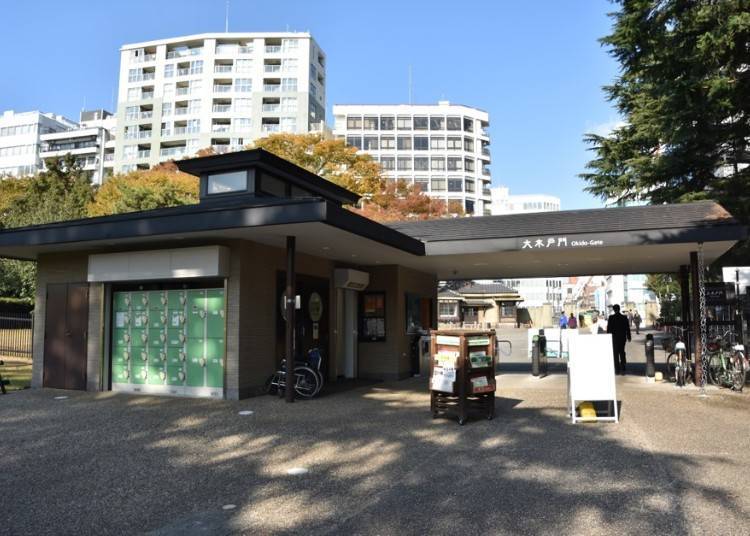
There is a parking lot next to the Okido Gate, which makes it convenient for those going by car. There is a greenhouse near the entrance.
- By train: Take the Tokyo Metro Marunouchi Line to Shinjuku-gyoemmae Station. Go out through Exit 2 and walk for 5 minutes.
- By bus: Board the Toei Bus Shina 97 (品97) going to Shinagawa-Shako (Shinagawa Garage) at Shinjuku Station Nishiguchi (West Exit), and get off at the Shinjuku-Itchōme (Shinjuku 1) bus stop.
- By bus (option 2): Board the Toei Bus Haya 81 (早81) going to Sōdai-Seimon (Waseda Univ.) at Shibuya Station Higashiguchi (East Exit) and get off at the Yotsuya-Yonchōme (Yotsuya 4) bus stop.
Getting to the Sendagaya Gate
The Sendagaya Gate is the least used of the three entrances, however, if you enter here, the large lawn area known as the Kids Area is nearby.
- Using the JR Sobu Line: Get off at Sendagaya Station and walk for 5 minutes.
- Using the Toei Subway Oedo Line: Get off at Kokuritsu-kyogijo Station; take Exit A5, and walk for 5 minutes.
- By bus (option 1): Board the Kuro 77 (黒77) Toei Bus (Meguro Station - Sendagaya Station route), and get off at the Sendagaya Station bus stop; then walk for 5 minutes.
- By bus (option 2): Board the Haya 81 (早81) Toei Bus going to Sodai-Seimon at Shibuya Station Higashiguchi (East Exit), and get off at the Sendagaya Station bus stop.
- General: 500 yen (Group discount for 30 or more people: 400 yen; no advance reservation required; Entrance gate payment using transportation IC cards is possible.)
- 65 years old and above: 250 yen (Proof of age must be presented at the ticket counter)
- Students (high school and above): 250 yen (Student ID must be presented at the ticket counter)
- Children (junior high school students and below/15 and under): Free
Advance purchase of admission tickets
Purchase web tickets in advance through the following website. Present the QR code on your smartphone or device for direct entry to Shinjuku Gyoen without queuing at the ticket counter. (Web tickets are valid for 6 months from the date of purchase.)
- October 1 to March 14: 9 AM - 4 PM (Gates close at 4:30 PM)
- March 15 to September 30: 9 AM - 5:30 PM (Gates close at 6 PM)*
(*Except for the following period: July 1 to August 20: 9 AM - 6:30 PM; Gates close at 7 PM) - Closed: Mondays (If Monday is a national holiday, closed on the next weekday), New Year's holidays (December 29 to January 3)
*During the periods of March 25 to April 24 and November 1-15: open on Mondays without any closures.
- Drinking alcohol, smoking cigarettes, using sports equipment and musical instruments in the garden are prohibited.
-

-
Address
11 Naito-cho, Shinjuku-ku, Tokyo, 160-0014
View Map -
Nearest Station
Shinjuku-Gyoemmae Station (Tokyo Metro Marunouchi Line)
5 minutes on foot
- Phone Number 03-3350-0151
-
Address
11 Naito-cho, Shinjuku-ku, Tokyo, 160-0014
This article was originally published in January 2020 and updated in August 2023. Please check the official website for the latest information.
*Prices and options mentioned are subject to change.
*Unless stated otherwise, all prices include tax.
Popular Tours & Activitiess
-

Autumn in Japan 2025: Fall Foliage Forecast & Where to Enjoy the Colorful Leaves (+Tour Info)
-

A Don Quijote Like No Other: Step Inside the All-New Tourist-Friendly Store at Shinjuku Tonanguchi Bekkan
by: Chehui Peh
-
Ad

Ohta’s Isan Gets a Refresh: Introducing the New Ohta’s Isan S and Ohta’s Isan <Sachet> S with Updated Packaging and Improved Benefits
-
Ad

Just 2 Hours from Tokyo! Enjoy Ibaraki’s Breathtaking Ocean Views, Flowers & Autumn Leaves on Private Tours
-

Fine Dining on Rails? Japan Announces Stunning NEW 'Laview' Restaurant Train
-
Ad

Feeling Unwell While Traveling? HOTEL de DOCTOR 24 is Japan's Sole 24-Hour Online Medical Consultation Service
Inspiration for Accommodations
-

Enjoy Mt. Fuji from the Comfort of Your Room! Recommended Ryokan with Mt. Fuji View
-

Stay Near the Cherry Blossoms! Hotels for Cherry Blossom Viewing in Tokyo
-

Family-Friendly Hotels with Free Shuttle to Disneyland: Convenient Access for a Magical Stay
-

Top Ranked Hakone Hotels with Mt. Fuji View: Enjoy Stunning Scenery from Your Private Space
-

Convenient Tokyo Hotels with Airport Shuttle: Ideal for Families and Heavy Luggage
-

Stunning Tokyo Tower View Hotels: Enjoy Spectacular Scenery from Your Private Space
-

Convenient Asakusa Hotels with Kitchens: Ideal for Extended Family Visits
-

Experience Luxury: Hakone's 10 Best Five-Star Accommodations
-

Enjoy Mt. Fuji Autumn Leaves! Top Hotels Near the Popular Autumn Leaves Corridor
-

Experience Hakone Fall Foliage from Your Room with Stunning Views
-

Exploring Tokyo: 4 Must-Visit Spots around Tokyo Station
-

Traveling around Tokyo: 10 Things You Didn't Know About Ueno Park!
-

5 Bamboo Forests in Tokyo: Must-See Picture-Perfect Spots!
by: Matt Vachon
-

Discover the Beauty of Tokyo's Ueno Park: A Seasonal Flower Adventure With Cherry Blossoms, Lotus Blooms, and More
-

Tokyo Train Map: Your Essential Guide to Subways and Railways
-

Kichijoji – Explore Tokyo’s Top-Rated Stylish Suburb in Half a Day!
- #best ramen tokyo
- #what to buy in ameyoko
- #what to bring to japan
- #new years in tokyo
- #best izakaya shinjuku
- #things to do tokyo
- #japanese nail trends
- #what to do in odaiba
- #onsen tattoo friendly tokyo
- #daiso
- #best sushi ginza
- #japanese convenience store snacks
- #best yakiniku shibuya
- #japanese fashion culture
- #best japanese soft drinks






















